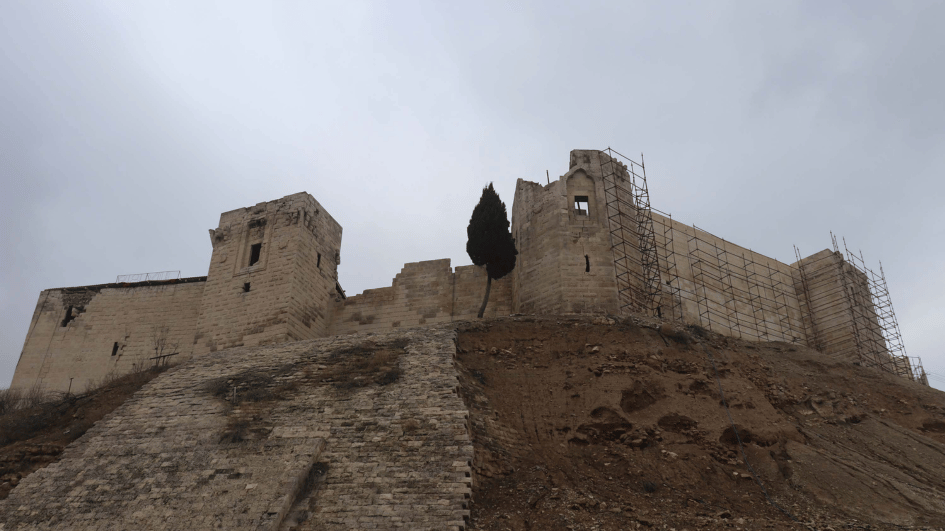Quake-hit Gaziantep Castle under restoration
GAZİANTEP

The restoration works in the Gaziantep Castle, which was severely damaged in the earthquakes centered in Türkiye’s east on Feb. 6 last year, have been completed by 60 percent. The overall restoration is set to conclude by the end of the year.
The bastions and interior parts of the 2,000-year-old castle, one of the symbols of the city, were destroyed in the earthquakes. Some of the bastions in the eastern, southern and southeastern parts of the castle collapsed, and the retaining wall surrounding the castle also collapsed. The teams that initiated work after the restoration tender was made in May last year, have been working intensively for months.
The Gaziantep Municipality, Conservation Application and Control Bureaus (KUDEB) Chairman Serdar Murat Gürsel said that some of the stones on the walls and bastions of the castle fell on the road and some fell into the castle.
Stating that the foundations of the walls and bastions were built on soil, Gürsel said that the castle was on a mound and that there was no major damage to the parts built on firm soil.
Noting that the work started quickly after the tender process, he said: "After the earthquake, we determined the condition of historical structures. Everyone was wondering about the damage to the castle. We saw that the stones on the walls and bastions of the castle were destroyed. Apart from this, there was a museum gallery inside the castle and stones falling inwards in the upper castle."
"The foundation of the walls and bastions is a historical structure built on soil. The castle is built on a mound. There is no major damage in the parts on firm soil, but we observed damage in the areas on mounds,” he added.
Gürsel emphasized that as the anniversary of the earthquake approaches, 99 percent of the damaged historical and cultural structures in the city have been repaired and reopened to tourism.
“Although the city got great damage by the earthquake, tourist visits started. Projects for all structures, especially the restoration of museums, historical buildings, boutique hotels, cafes, restaurants, and the castle, have been carried out by a commission. The Culture and Tourism Ministry, the Foundations Regional Directorate and the municipality fulfilled their part, and restorations were initiated quickly,” he said.
Gürsel stated that the work in the castle was finished by 60 percent and that the renovation process will be completed by the end of this year.
“The bastion and walls of the castle are undergoing restoration process. All the stones that fell during the earthquake were collected. Restoration works continue without interruption,” he added.
26 structures were damaged in Adıyaman
In Adıyaman, which is like an open-air museum with over 300 ruins, including Mount Nemrut, 26 structures were damaged in the earthquakes, too.
Among them, the 2,000-year-old handshake column in the Karakuş Tumulus was overturned. The 2,000-year-old Old Kahta Castle was also severely damaged. Tut Vijne Bridge, built in the 18th century, was destroyed. The Adıyaman Grand Mosque, built in the 16th century, was demolished. The Mor Petrus and the Mor Paulus Church, built in 1701, were heavily damaged.
The column in the Karakuş Tumulus was restored and opened to visitors in just two weeks. While the restoration work in Old Kahta Castle has come to an end, it will welcome visitors this tourism season. The project is also on the way to rebuilding the demolished Grand Mosque and restoration work continues at Mor Petrus and the Mor Paulus Church.
















